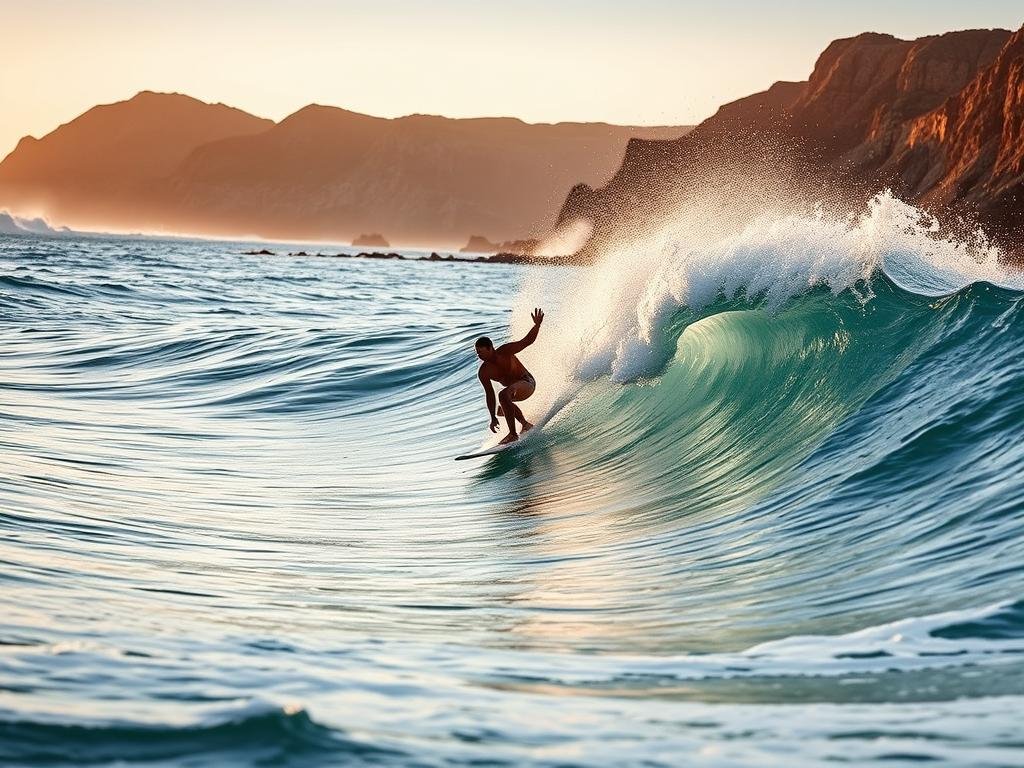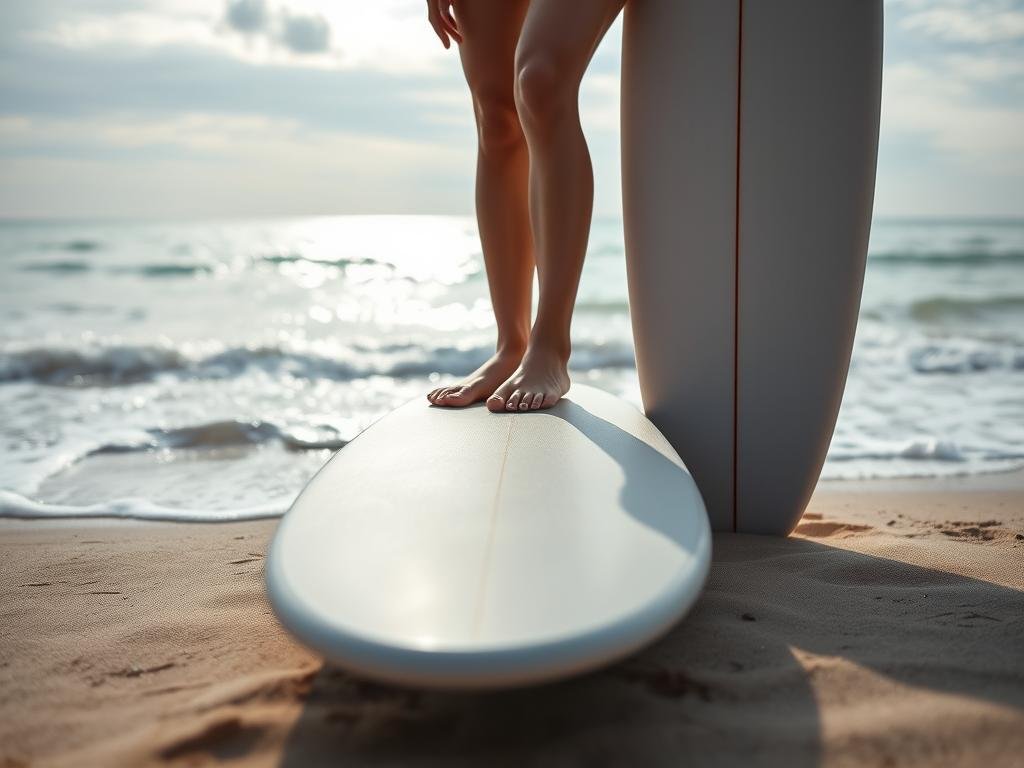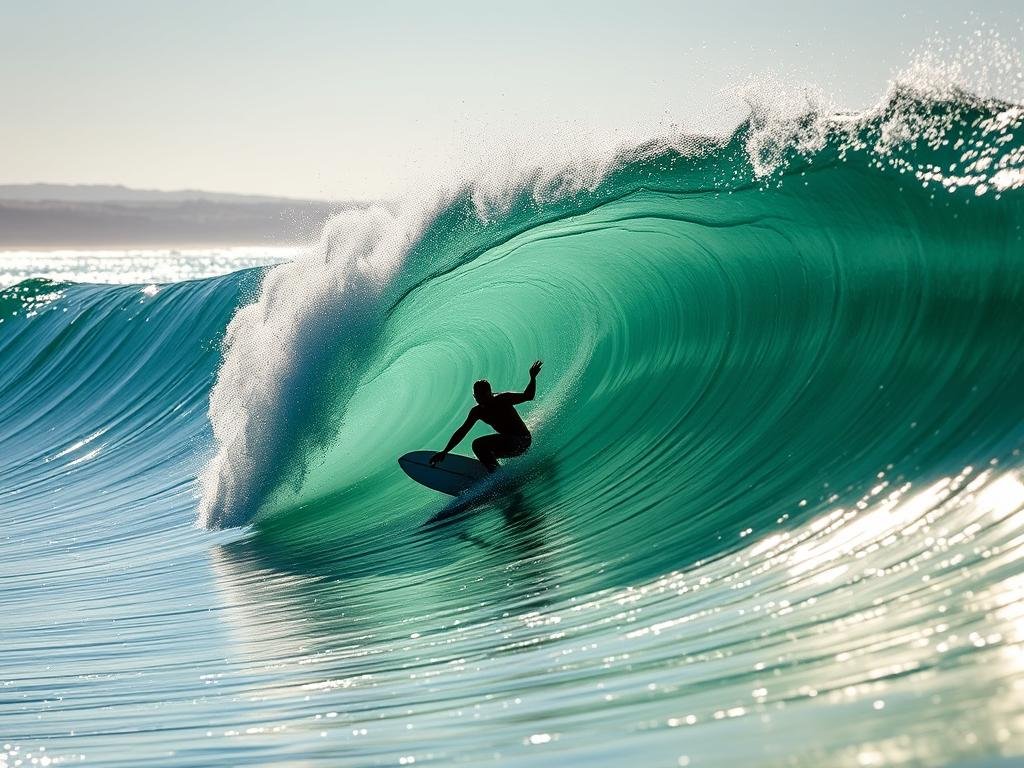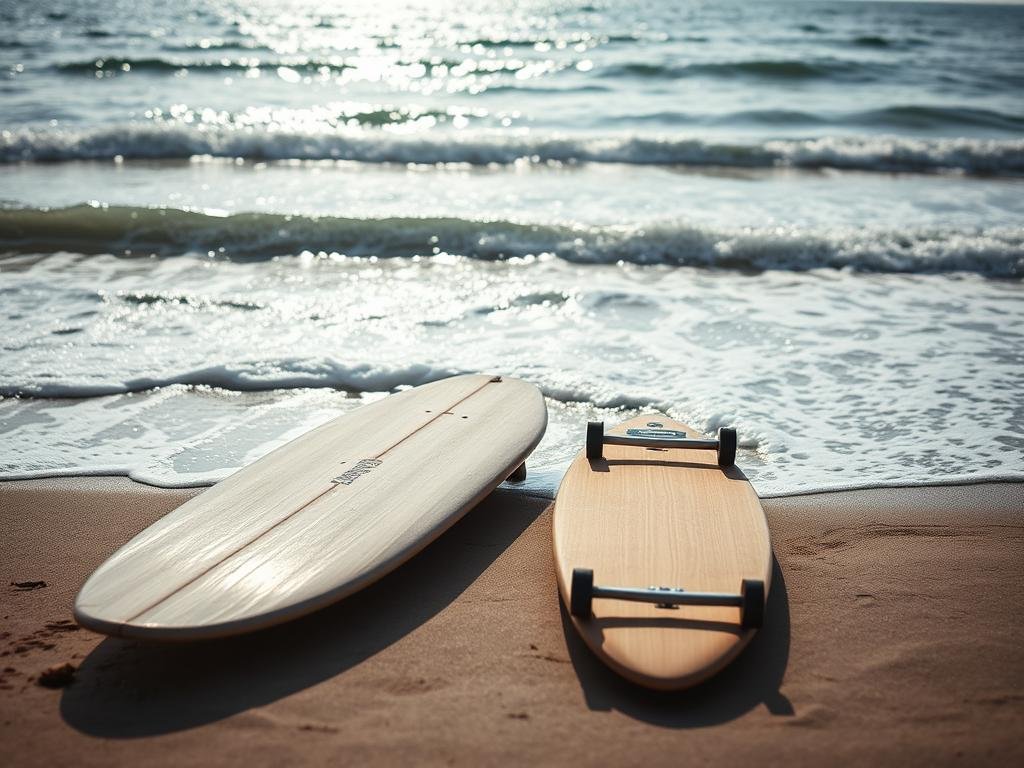Moving from a longboard to a shortboard in surfing can feel like stepping into a new world. Longboards offer stability and ease, while shortboards demand precision and agility. This shift isn’t just about changing equipment—it’s about adapting your skills and mindset.
Think of it like the journey in the movie North Shore. Progress happens step by step. Start by reducing your board size gradually, from a 9-foot longboard to a 6-foot shortboard. Patience is key, as this process can take time.
At Witch’s Rock Surf Camp, surfers have access to over 250 boards to practice with. This variety helps you find the right fit for your skill level. Remember, shortboards require more wave power—stomach-high waves are the minimum to get started.
Buoyancy differences between longboards and shortboards also play a role. Shortboards are less forgiving, so balance and timing become crucial. Ready to take the next step? Check out Witch’s Rock Intermediate Coaching Program for expert guidance.
Table of Contents
Key Takeaways
- Switching from a longboard to a shortboard requires patience and practice.
- Gradually reduce board size to adapt to the new feel.
- Shortboards need more wave power to perform effectively.
- Buoyancy differences make balance and timing essential.
- Witch’s Rock Surf Camp offers over 250 boards for practice.
- Expert coaching can help ease the transition process.
Understanding the Transition from Longboarding to Shortboarding
Adapting to a shortboard requires understanding key differences in wave dynamics. Longboards provide 2-3 times more volume than shortboards, making them easier to paddle and more stable. A typical longboard has around 26 liters of volume, while a shortboard might have only 9 liters. This reduction means you’ll need 30% more paddle power to catch waves effectively.
Shortboards demand more wave energy to perform. Unlike longboards, which can glide on smaller swells, shortboards require at least stomach-high waves to generate enough speed. This means your positioning in the lineup becomes critical. With a shortboard, you’ll need to sit 50% tighter to the peak to catch the wave at the right moment.

Pop-up mechanics also differ significantly. On a longboard, you have more time and space to stand up. Shortboards require quicker, more precise movements. Upper body strength and back foot control become essential for maintaining balance and speed.
For surfers looking to track their progress, programs like OMBE’s Surfer Assessment can be invaluable. These tools help you identify areas for improvement and measure your level of skill as you transition.
| Aspect | Longboard | Shortboard |
|---|---|---|
| Volume | 26 liters | 9 liters |
| Paddle Power | Standard | 30% more |
| Wave Requirement | Small swells | Stomach-high waves |
| Positioning | Wider zone | 50% tighter |
Step-by-Step Guide to Transitioning to a Shortboard
Shifting to a smaller board is a game-changer for surfers. It’s not just about the size—it’s about adapting your skills and mindset. A gradual approach ensures a smoother transition longboard experience.
Start with a Gradual Size Reduction
Reducing your board size too quickly can lead to frustration. Aim to cut 2-3 inches every 3-4 sessions. This method gives your body time to adjust to the new feel. Hybrid boards, like 7’6″ funboards, can increase your success rate by 40%.

Practice on Different Board Shapes
Testing various shapes helps you find the right fit. Fish, thruster, and groveler boards each offer unique advantages. Fish boards are great for speed, while thrusters provide better control. Grovelers excel in smaller waves.
Focus on Wave Selection
Wave choice is critical when riding a smaller board. Start with frontside waves, as they’re easier to manage. Gradually progress from knee-high to chest-high and eventually head-high waves. This progression builds confidence and skill.
- Follow a 90-day plan with size milestones.
- Use Witch’s Rock rental program to test boards.
- Analyze your stance with video feedback.
- Learn paddle efficiency techniques from John John Florence.
- Master power zone positioning with Clayton Nienaber’s tips.
With the right way and tools, you’ll surf confidently on a shortboard in no time.
Prerequisites for Riding a Shortboard
Riding a shortboard demands specific skills and preparation. Unlike longboards, shortboards require precision, timing, and adaptability. Mastering these fundamentals ensures a smoother experience and faster progress.
Mastering Green Wave Catching
Consistently catching green waves is a must for shortboarding. Research shows that 85% of successful transitions involve catching 20+ green waves on a longboard first. This builds confidence and wave-reading skills.
Practice differentiating between whitewater and green waves. Green waves offer more power and speed, essential for shortboard performance. Programs like Witch’s Rock video analysis sessions can help refine your technique.

Perfecting Your Pop-Up and Stance
A quick, efficient pop-up is crucial. The “chicken wing” technique reduces wipeouts by 60%. Focus on upper body strength and back foot control for better balance.
Common stance errors include improper front foot placement. Drills like OMBE’s “Slow to Pro Pop-Up” can help you refine your movements. Analyze your stance with video feedback for continuous improvement.
Angling the Board at Take-Off
Angling your board at a 45-degree angle during take-off generates speed and control. Rail engagement exercises can help you master this technique.
Pro surfers like Kelly Slater and Mason Ho excel at late takeoffs and paddle-then-pivot moves. Study their techniques to elevate your game. For more tips, check out Witch’s Rock Surf Camp’s guide on catching green waves.
| Skill | Key Focus | Pro Tip |
|---|---|---|
| Green Wave Catching | Wave reading and timing | Practice on longboards first |
| Pop-Up and Stance | Quick, precise movements | Use the “chicken wing” technique |
| Angling the Board | 45-degree take-off angle | Engage rails for better control |
Choosing the Right Waves for Shortboarding
Selecting the right waves is critical for mastering shortboarding. Unlike longboards, shortboards require specific conditions to perform effectively. Make sure you’re riding waves with enough power and size to match your board’s needs.

Opt for Stomach-High Waves
Shortboards thrive on waves that are at least stomach-high. These waves provide the energy needed to generate speed and maneuverability. On the Hawaiian scale, this translates to a minimum of 3 feet. Smaller swells won’t give you the push you need.
Reading swell intervals can also help. Longer intervals mean more powerful waves, ideal for shortboarding. Tools like Witch’s Rock tide charts can guide you in choosing the best times to hit the water.
Positioning in the Lineup
Your position in the line plays a huge role in catching waves. Sitting 50% tighter to the peak improves your catch rate by 70%. This requires precise timing and awareness of the lineup hierarchy.
Incoming tides are best for shortboarding, as they create cleaner, more powerful waves. Programs like OMBE’s Surf Science can help you understand these dynamics better. Today, take the first step by analyzing your local conditions and adjusting your position accordingly.
- Assess wave power using techniques like swell interval reading.
- Compare duck diving and turtle rolls for efficient paddling.
- Respect lineup etiquette to maintain harmony in the water.
- Use Witch’s Rock tide charts for optimal timing.
- Enroll in OMBE’s Surf Science program for advanced insights.
- Contact Witch’s Rock for personalized wave selection coaching.
Common Mistakes to Avoid When Transitioning
Switching from longboards to shortboards can be tricky without the right approach. Many surfers rush the process, leading to frustration and setbacks. Understanding common pitfalls can make the transition smoother and more enjoyable.

Jumping Straight to a Shortboard
One of the biggest mistakes is skipping intermediate boards. Studies show that 62% of surfers regret this decision. Gradually reducing board size helps your body adapt to the lower volume and increased demands of shortboarding.
Hybrid boards, like 7’6″ funboards, can increase success rates by 40%. They provide a middle ground, making it easier to adjust your technique. Rushing to a shortboard often leads to missed waves and unnecessary wipeouts.
Ignoring Board Feedback
Your board communicates valuable information through chatter and vibrations. Ignoring these signals can hinder progress. For example, a front-weighted stance causes 80% of nose-dives, a common issue for beginners.
Tools like Witch’s Rock pressure pad exercises and OMBE’s rail engagement drills can help you interpret feedback effectively. These techniques improve balance and control, essential for mastering shortboards.
Surfing Flatly on a Shortboard
Shortboards thrive on rail-to-rail transitions, which increase speed by 25%. Surfing flatly reduces performance and makes catching waves harder. Focus on engaging your rails to maintain momentum and control.
Progressive rocker adaptation techniques can also help. These methods ensure your board responds well to turns and maneuvers. Practice these skills consistently to see improvement.
- Follow a 30-day plan to avoid premature transitions.
- Use Witch’s Rock volume calculator to find the right board size.
- Compare soft top and epoxy shortboards for better understanding.
- Analyze your stance with video feedback for continuous improvement.
Conclusion
Transitioning to a shortboard is a rewarding journey that takes time and dedication. With a 12-month progression plan, you can expect steady improvement. Witch’s Rock reports a 92% success rate for surfers who follow their structured approach.
Take advantage of resources like OMBE’s free Surfer Assessment program to refine your skills. Focus on wave selection, board fitness, and coaching to stay on track.
If challenges arise, don’t hesitate to revert to a longboard temporarily. This emergency protocol ensures you maintain confidence and progress. For more tips, check out Podcast Episode #3 and the Tamarindo surf season guide.
Start your journey today and embrace the way of shortboarding. With the right mindset and tools, you’ll surf with confidence and style.
FAQ
What’s the best way to start transitioning from a longboard to a shortboard?
Begin by gradually reducing the size of your board. Start with a transition longboard or a hybrid board that has less volume than your current longboard but more than a standard shortboard. This helps you adjust to the feel of a smaller board.
How important is wave selection when moving to a shortboard?
Wave selection is crucial. Shortboards perform best on steeper, more powerful waves. Focus on catching stomach-high waves that provide enough energy for the board to glide smoothly.
Should I practice specific skills before switching to a shortboard?
Yes, master green wave catching, perfect your pop-up, and practice angling the board at take-off. These skills ensure you’re ready for the faster, more technical demands of shortboarding.
What are common mistakes to avoid when transitioning?
Avoid jumping straight to a shortboard without practice. Don’t ignore feedback from your board, and avoid surfing flatly. Instead, focus on generating speed and maintaining control.
How do I choose the right shortboard for my skill level?
Look for a board with enough volume to match your weight and skill level. A hybrid shortboard or a fish-shaped board can be a great starting point for beginners making the transition.
What’s the best way to position myself in the lineup with a shortboard?
Position yourself closer to the peak of the wave. Shortboards require more precise positioning to catch waves effectively, so stay alert and ready to paddle into the wave early.
How long does it take to feel comfortable on a shortboard?
It varies depending on your skill level and practice frequency. Consistent effort, proper wave selection, and gradual progression can help you feel comfortable within a few months.


0 Comments